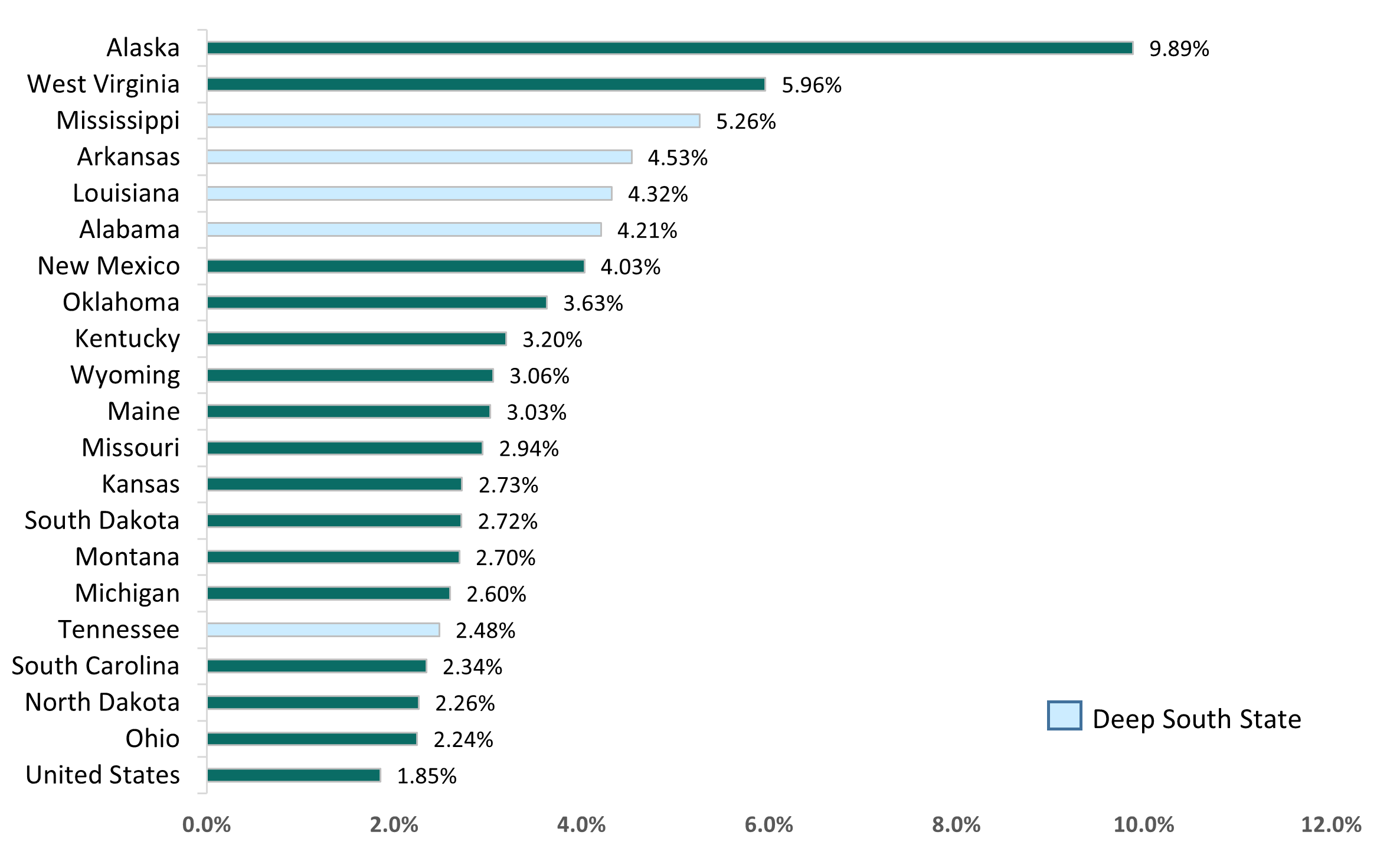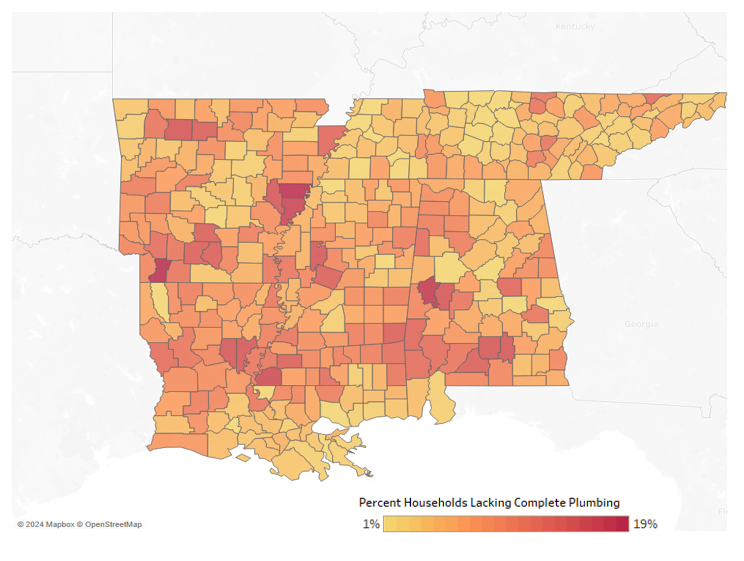Federal Funds Provide Needed Water Infrastructure Upgrades for MS Delta Communities
June 6th, 2024
By Sara Miller, Senior Policy Analyst
The White House has announced $5.8 billion for water infrastructure projects as administered by the Environmental Protection Agency. The funds derive from the $1.2 trillion infrastructure bill. The funds include $3.2 billion for the Drinking Water State Revolving Fund for upgrades to water treatment plants, water distribution and piping systems, and lead pipe replacement. It also includes $1 billion for seven major rural water projects.
Federal investments in water infrastructure are critical for rural, low-resourced communities that are in high need of infrastructure upgrades. In places like the Mississippi Delta where decades of persistent poverty, resource extraction, and environmental racism have left rural Black communities with outdated, aging water pipes, these communities are more susceptible to adverse health outcomes and stunted businesses development.[1] Additional federal investments will address longstanding issues of water insecurity that these communities have endured even as they fought for greater investments.
On the Fight for Adequate Water Infrastructure
In 1970, residents of Rosedale, Mississippi fought for water and sewer infrastructure development in the areas of town that were home to a majority of the town’s black residents. Residents protested and boycotted town businesses until investments were made in water services in the underserved areas. Overall, many Black residents in the Delta did not have any running water and had to collect water from agricultural ditches, fire hydrants, or other towns and often stored water in containers of dubious safety. One of the leaders of the protests, Johnnie Todd, later became the first Black mayor of Rosedale.[2] Ultimately, a federal appeals court forced MS Delta municipalities to invest in the necessary infrastructure in Black neighborhoods. In the 1971 case of Hawkins v. Shaw, a federal court ruled that municipalities must provide equal funding for public services in Black and White neighborhoods.[3]
Water Insecurity in the Deep South
Today, many Deep South communities still have a much higher percentage of housing units without running water than the United States average. Four of the five states in HOPE’s service area are in the top ten among states for percent of housing units without complete plumbing facilities. See Figure 1. Some counties in the Mississippi Delta have as many as 19% of housing units without complete plumbing facilities. See Figure 2.
Figure 1. Percent of Households Lacking Complete Plumbing, Top 20 States.[4]

Rural communities are often unable to update outdated and unreliable systems due to limited revenue from the small number of residents paying for water services. These revenue challenges have worsened as population declines in rural areas and businesses shut down. Shaw, Mississippi, for example has experienced a 34 percent population decline between 2010 and 2020, and the town’s revenue is solely generated from property taxes and water bill payments. Like many rural, predominately Black Delta communities, Shaw utilized its original water pipes from at least 70-80 years ago. The town’s small revenue presents challenges in accessing federal investment programs that often rely on reimbursement models to provide funding. Fortunately, with assistance from HOPE, Shaw has received $1.2 million through the Mississippi Municipality and County Water Infrastructure (MCWI) Grant Program, a program funded by the American Rescue Plan Act. The town can now replace its original water pipes.
Figure 2. Percent Households Lacking Complete Plumbing in Deep South Counties.[5]

Water insecurity and poor water infrastructure, like many other civil rights issues in the Deep South, are ultimately resolved through federal intervention. As federal agencies continue to direct funds for infrastructure programs, the challenges of rural communities of color must be considered, particularly in light of the legacy of local communities in fighting for adequate community infrastructure.
[1] “Water Insecurity And Population Health: Implications For Health Equity And Policy, ” Health Affairs Health Policy Brief, October 12, 2023. DOI: 10.1377/hpb20230921.68748; DigDeep.2023.” Draining: The Economic Impact of America’s Hidden Water Crisis”. https://www.digdeep.org/s/Draining_-The-Economic-Impact-of-Americas-Hidden-Water-Crisis-EXECUTIVE-SUMMARY.pdf
[2] Ward, T. J., Jr. (2022, September 12). The water crisis in Jackson has been decades in the making. Washington Post. https://www.washingtonpost.com/made-by-history/2022/09/13/water-crisis-jackson-has-been-decades-making/
[3] Hawkins v. Town of Shaw, Mississippi, 437 F.2d 1286 (5th Cir. 1971).
[4] U.S. Census Bureau, “Plumbing Facilities for All Housing Units,” 2022. American Community Survey, ACS 5-Year Estimates Detailed Tables, Table B25047, 2022, accessed on February 22, 2024, https://data.census.gov/table/ACSDT5Y2022.B25047?q=Water, Sewage, and Plumbing Facilities&g=040XX00US28&moe=false&tp=true.
[5] Ibid.






